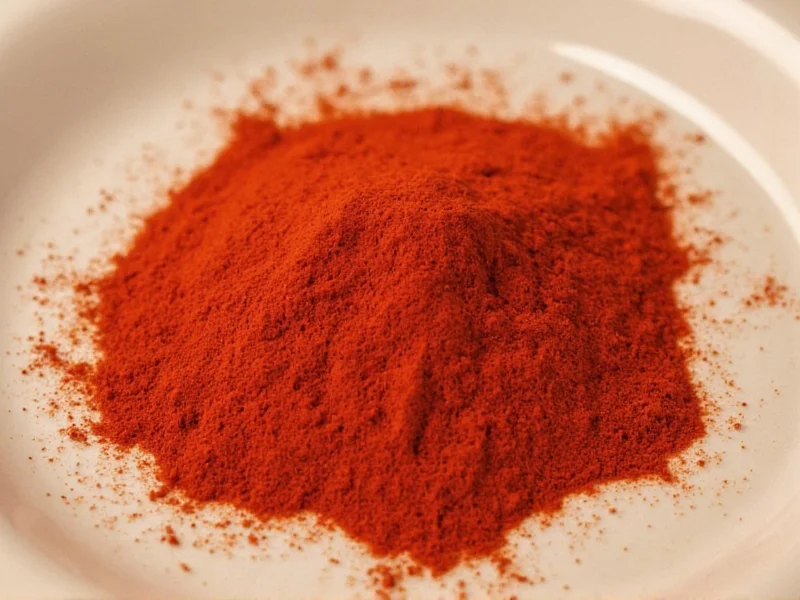Running out of paprika mid-recipe doesn't have to ruin your cooking. Whether you need Hungarian sweet paprika for color or Spanish smoked paprika for depth, several kitchen staples can effectively replace this versatile spice. Understanding paprika's flavor profile—ranging from sweet and mild to hot and smoky—is crucial for selecting the right substitute that maintains your dish's intended character.
Understanding Paprika's Role in Cooking
Paprika serves multiple purposes in recipes: it provides vibrant red color, subtle sweetness, and varying degrees of heat depending on the variety. Sweet paprika offers earthy notes without heat, while smoked paprika adds a campfire-like depth. Hot paprika brings noticeable spiciness. When substituting, consider which aspect matters most for your specific recipe—color, mild flavor, or smokiness.
Top Paprika Substitutes by Flavor Profile
For Sweet Paprika Substitution
When your recipe calls for sweet paprika primarily for color and mild flavor:
- Chili powder (1.5x amount): Contains cumin and garlic that alter flavor slightly but provides similar color. Ideal for chili, stews, and rubs.
- Tomato paste + cumin (1 tbsp tomato paste + 1/4 tsp cumin per tsp paprika): Mimics color and earthiness without heat. Perfect for sauces and braises.
- Pimento powder (1:1 ratio): Nearly identical flavor profile but harder to find. Use when available.
For Smoked Paprika Substitution
When you need that distinctive smoky dimension:
- Chipotle powder (1/2 amount): Provides smokiness with noticeable heat. Reduce other spices accordingly.
- Liquid smoke (1-2 drops per tsp paprika): Use sparingly in soups, stews, or marinades.
- Smoked sea salt + regular paprika (1/4 tsp smoked salt + 3/4 tsp regular paprika): Best when you have regular paprika but need smokiness.
For Hot Paprika Substitution
When heat is the primary requirement:
- Cayenne pepper (1/8-1/4 amount): Much hotter than hot paprika. Start with less and adjust.
- Red pepper flakes (1/2 amount): Provides heat with texture. Best for dishes where texture won't matter.
- Hot sauce (1/2 tsp per tsp paprika): Adds liquid, so reduce other liquids in recipe.
| Substitute | Ratio | Best For | Flavor Notes |
|---|---|---|---|
| Chili powder | 1.5x | Chili, stews, meat rubs | Earthy with cumin notes, slightly hotter |
| Cayenne pepper | 1/8-1/4x | Spicy dishes needing heat | Much hotter, no sweetness |
| Chipotle powder | 1/2x | Smoky recipes like paella | Smoky with noticeable heat |
| Tomato paste + cumin | 1 tbsp + 1/4 tsp per tsp | Sauces, braises, soups | Similar color, earthy flavor |
| Liquid smoke | 1-2 drops per tsp | Marinades, soups, stews | Pure smokiness, use sparingly |
Recipe-Specific Substitution Guidance
Choosing the best paprika alternative depends heavily on your specific dish:
- For goulash or Hungarian dishes: Use tomato paste with cumin to maintain authentic flavor without heat.
- For paella or Spanish recipes: Chipotle powder provides the closest smoky profile when smoked paprika is unavailable.
- For deviled eggs or potato salad: A pinch of cayenne in mayonnaise offers similar color and mild heat.
- For meat rubs: Chili powder works well but reduce other spices since it contains additional seasonings.
- For soups and stews: Liquid smoke (sparingly) or smoked salt can replicate smokiness without altering texture.
Common Substitution Mistakes to Avoid
Many home cooks make these errors when replacing paprika:
- Using equal amounts of cayenne: This creates overwhelmingly spicy dishes since cayenne is significantly hotter.
- Substituting plain paprika for smoked paprika: You'll miss the essential smoky dimension in recipes designed for it.
- Ignoring recipe context: Using tomato-based substitutes in dry rubs creates unwanted moisture.
- Overcompensating for color: Adding too much substitute just for color alters flavor balance.
Creating Your Own Paprika Blend
When you need a more customized solution, create a paprika alternative blend:
- Sweet paprika alternative: Mix 2 tsp sweet red bell pepper powder + 1/4 tsp garlic powder + 1/8 tsp onion powder.
- Smoked paprika alternative: Combine 2 tsp regular paprika + 1/4 tsp smoked salt + 1 drop liquid smoke.
- Hot paprika alternative: Blend 2 tsp sweet paprika + 1/4 tsp cayenne pepper.
Dry these mixtures thoroughly and store in an airtight container. While not identical to commercial paprika, these blends provide workable alternatives when you're between grocery trips.











 浙公网安备
33010002000092号
浙公网安备
33010002000092号 浙B2-20120091-4
浙B2-20120091-4